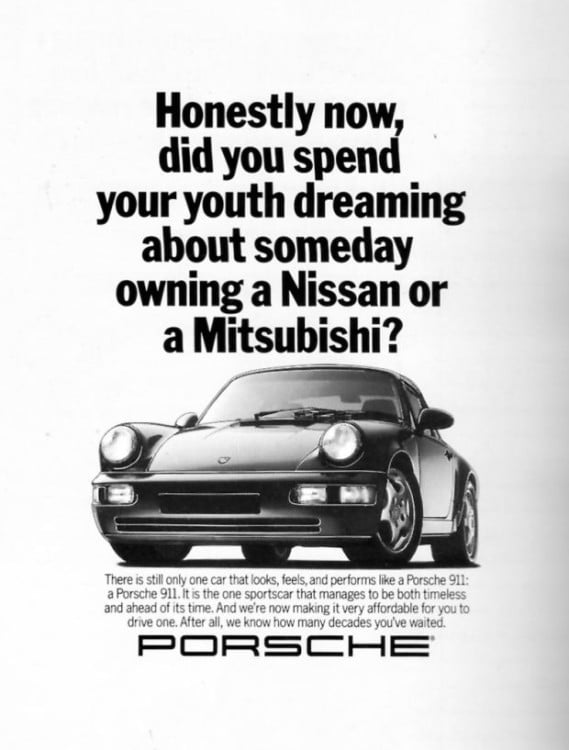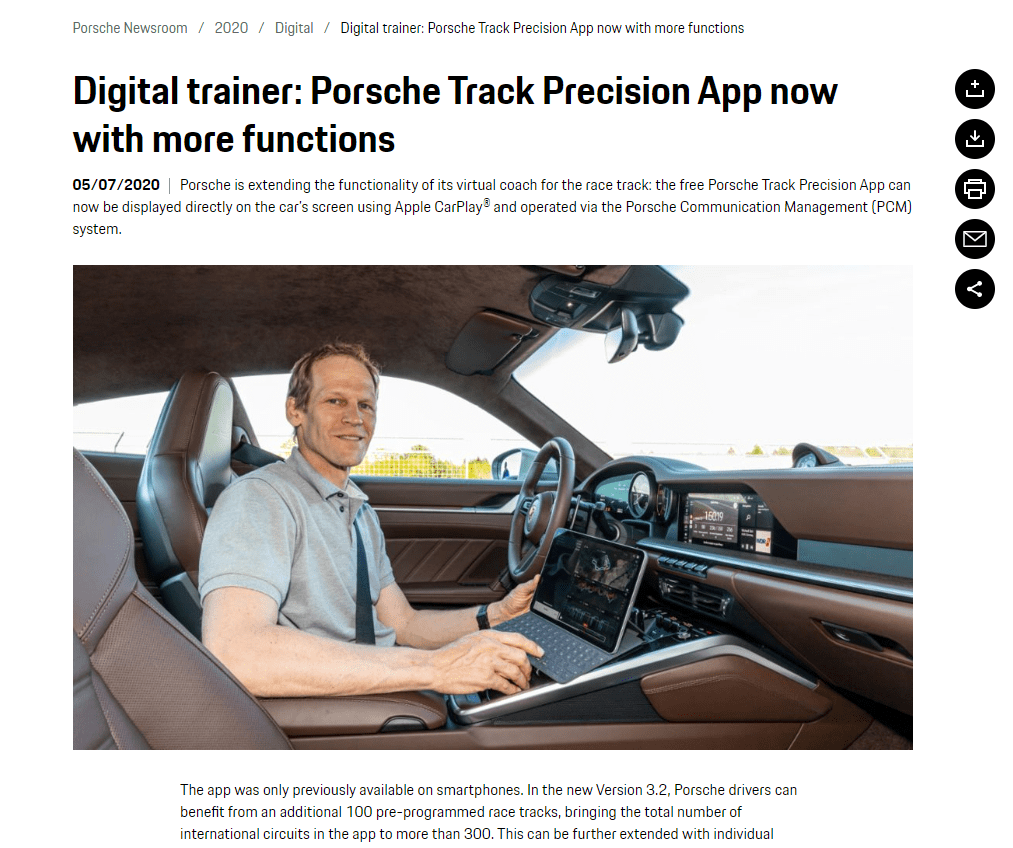If you’ve ever written copy before, you’ve stumbled upon two different terms.
…Copywriting
…And copyediting.
What’s the difference?
Is it important to separate the two?
Yes. Very.
Both of these processes require separate tools, skills, and concepts.
Knowing what they are and how to do them properly will make copy extra crisp and effective.
Let me explain copywriting vs copyediting. I’ll only need a couple minutes of your time.
What is copywriting?
Copywriting is the art of writing sales copy that generates revenue or another key performance metric.
Sales copy is a fancy-schmancy way to say business material.
This includes:
- Sales letters
- Sales pages
- Brochures
- Web pages
- Product descriptions
- Advertisements
- Headlines and slogans
Keep in mind the difference between copy and content, too.
Sales copy is focused on selling and driving transactional value.
Content, on the other hand, leans more towards educating the audience and isn’t selling anything.
Here’s an example of copywriting in its finest form:

This is a cheeky advertisement from Porsche poking fun at competitors Nissan and Mitsubishi.
Notice how the advertisement is all about the car, its features, benefits, value proposition, etc.
Next, take a look at this:

What is it?
A blog post!
A.K.A a piece of content that’s educating the reader. Not selling.
Great sales copy is critical for every business. This is because words affect how we think and feel, naturally leading us to purchase products and take action.
Read my article on copywriting psychology to learn more.
And, frankly, lots of businesses have snore-worthy copy.
It’s vague, boring, and uninspiring.
Learning how to write epic copy, like in my courses fixes that.
This is the case since understanding the psychology and science of effective writing will boost revenue, growth, and other KPIs.
That’s also why talented copywriters are skilled in areas like:
- Research: You must be able to thoroughly research industries, products, markets, trends, and customers to become an expert.
- Psychology: Social, behavioural, and purchasing psychology are some skills on a copywriter’s tool belt. It helps them produce sales copy that plays on triggers and primal desires.
- Writing (obviously!): Not only are great copywriters, good writers, they know how to write as they speak, create emotion, and make readers excited to purchase something through years of studying strategies and techniques.
- Marketing: They understand sales, lead generation, funnels, email, social, SEO, and other channels/strategies.
Copywriting is also broken down into several different phases.
The first is research—although many mistakenly skip it!
But you see, it’s critical to understand the target audience, product, competitors, and market.
That’s where research skills come into the picture.
I like to ask specific questions about the audience and product like:
- Who am I speaking to? What are their hopes, fears, and desires?
- What are their demographics?
- What are the features and benefits of the product?
- What’s the unique mechanism or value proposition of what I’m selling?
- What objections would customers have?
This research can take hours … days … or weeks (yes, really), depending on the scope of the project.
And, frankly, it’s ongoing.
I’ll come up with ideas and figure out new things on the fly.
Secondly, there’s the writing phase.
This is when I create an outline consisting of all of the major points I want to cover in an advertisement.
Headlines, subheads, features, benefits, calls to action, all that jazz.
Then I begin the ugly first draft.
It’s not going to look pretty. It’s not complete. But, it gets the job done.
I sleep on it. There’s something about stepping away from sales copy that refreshes the mind so when I come back to it, I have more ideas and inspiration.
That’s when thirdly, we introduce copyediting.
Let’s talk about that next.
What is copyediting?
Copyediting naturally comes after the copywriting process.
After all, you’re never done until you’ve edited and proofread. (As nice as the opposite would be!)
Leonardo Da Vinci said it best when he commented, “Art is never finished; it’s abandoned.”

Technically you could tweak it, smooth it out, and make it better.
But time is finite. You have deadlines. Clients are eagerly waiting for deliverables.
That’s where copyediting comes into the picture. It is the process of editing the structure, syntax, and fine details of the sales copy.
The goal is to ensure that the finished product is easy to read, achieves the main campaign goal, and is free of grammatical errors.
Copyediting isn’t one size fits, though. There are different types of editing, such as:
- Structural editing: Optimizing the structure, completeness, and overall quality. Editors will leave memos and notes of concerns, ideas, and changes.
- Line editing: Going line-by-line and editing the copy to be free of errors.
- Developmental editing: Looking at the bigger picture of the project and sales copy, an editor will ensure that points line up, there is logical flow, and proper order.
- Substantive editing: Also known as full editing, this is where an editor will completely edit the sales copy from start to finish.
Reach out to me if you require copyediting services to make sure your project is perfect before publishing it.

Additionally, there are very specific skills that go into being a great copyeditor. They are:
- High-level linguistics: Understanding the hundreds of small details that make up proper syntax, grammar, spelling, and language ensure the highest degree of quality.
- Fact-checking: You must have a thorough ability to research the accuracy of facts, quotes, and be able to refer to the original source as a reference.
- Formatting: Proper formatting of the document including typeface, font size, tone of voice, and other elements.
- Writing: Editors will, of course, have to be naturally talented writers helping them locate errors and copy that needs to be updated.
- Proofreading: Editors need to be proficient at thoroughly reading their changes and ensuring there are no mistakes before publishing and that it still aligns with the original goal.
Additionally, you should read my articles on copyediting best practices and an effective copyediting checklist.
Wrapping up copywriting vs copyediting
Writing and editing are two completely different processes.
They require unique skills, tools, and resources.
Mastering the two will make you a dangerous asset. You’ll be unstoppable.
To recap copywriting vs copyediting, sales copy is business material like sales letters and brochures that are focused on selling a product.
Its goal is to drive sales, leads, and transactional results. Hence why it’s typically closer to the point of sale too.
Copywriters commonly charge high rates because of the clear and significant return they generate because of this.
Content, on the other hand, is informational material.
Think blog posts, case studies, or tutorials.
Editing is the process of optimizing the structure, ideas, and flow of the copy to maximize its quality before launch.
Contact me at any time if you require a copyeditor to review your work.














